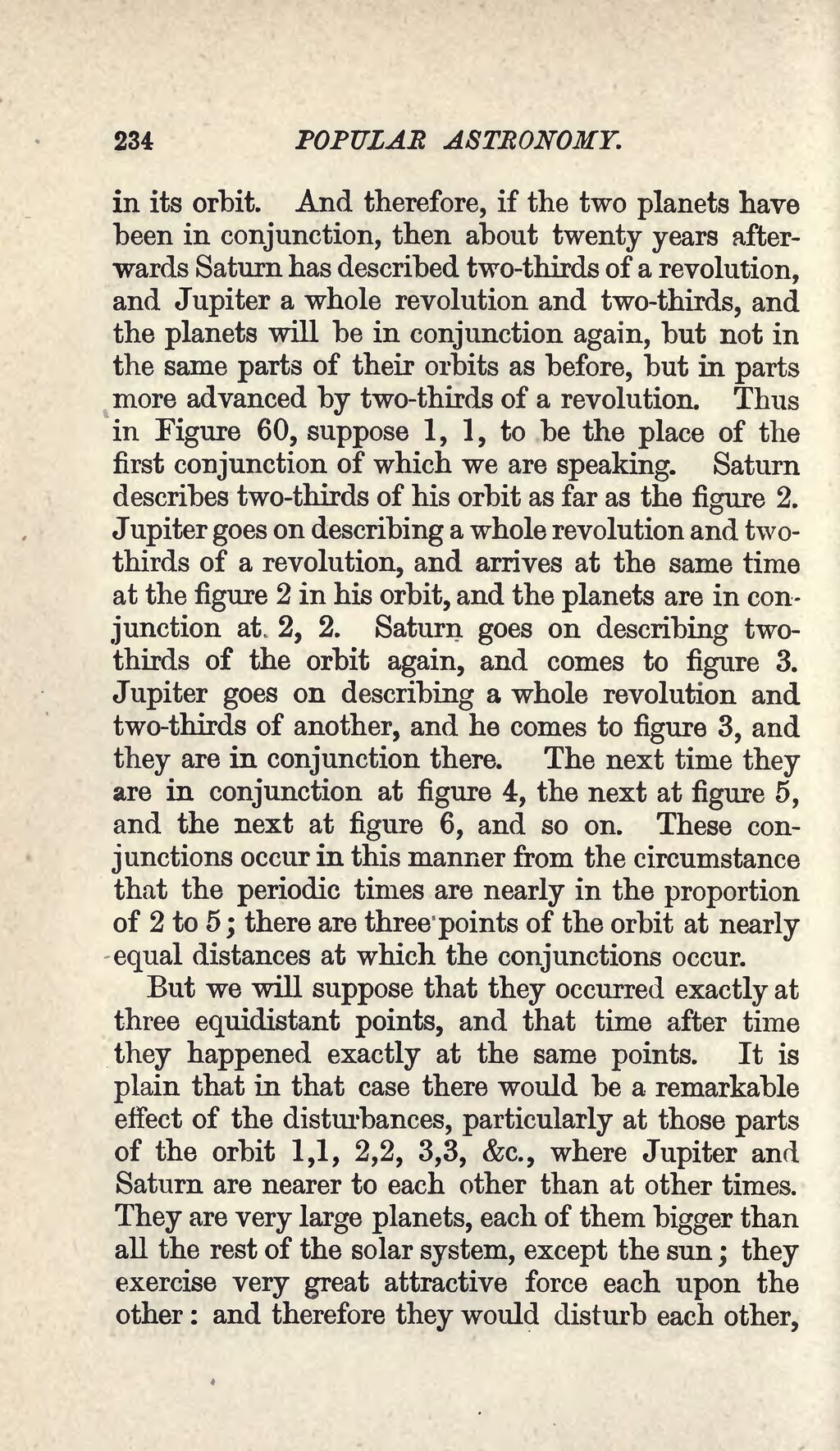in its orbit. And therefore, if the two planets have been in conjunction, then about twenty years afterwards Saturn has described two-thirds of a revolution, and Jupiter a whole revolution and two-thirds, and the planets will be in conjunction again, but not in the same parts of their orbits as before, but in parts more advanced by two-thirds of a revolution. Thus in Figure 60, suppose 1, 1, to be the place of the first conjunction of which we are speaking. Saturn describes two-thirds of his orbit as far as the figure 2. Jupiter goes on describing a whole revolution and two-thirds of a revolution, and arrives at the same time at the figure 2 in his orbit, and the planets are in conjunction at. 2, 2. Saturn goes on describing two-thirds of the orbit again, and comes to figure 3. Jupiter goes on describing a whole revolution and two-thirds of another, and he comes to figure 3, and they are in conjunction there. The next time they are in conjunction at figure 4, the next at figure 5, and the next at figure 6, and so on. These conjunctions occur in this manner from the circumstance that the periodic times are nearly in the proportion of 2 to 5; there are three points of the orbit at nearly equal distances at which the conjunctions occur.
But we will suppose that they occurred exactly at three equidistant points, and that time after time they happened exactly at the same points. It is plain that in that case there would be a remarkable effect of the disturbances, particularly at those parts of the orbit 1,1, 2,2, 3,3, &c., where Jupiter and Saturn are nearer to each other than at other times. They are very large planets, each of them bigger than all the rest of the solar system, except the sun; they exercise very great attractive force each upon the other: and therefore they would disturb each other,

